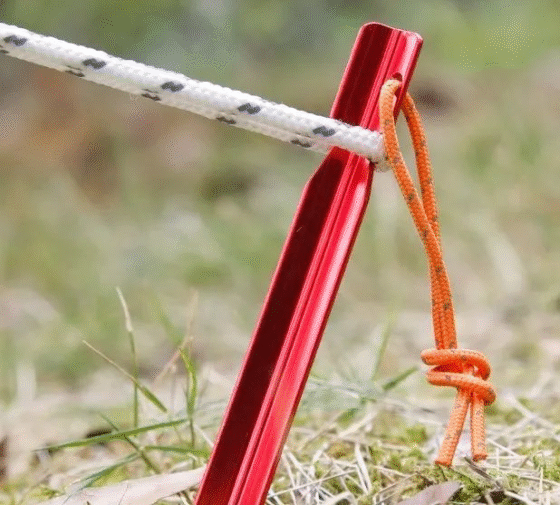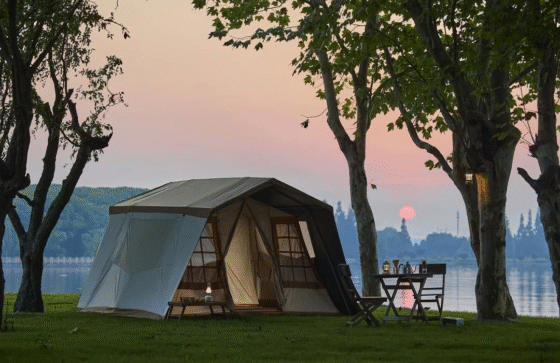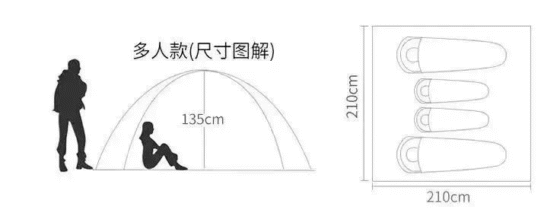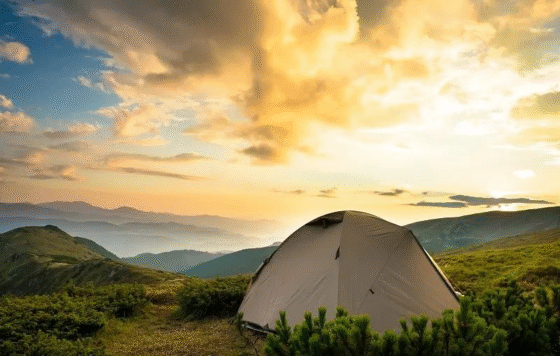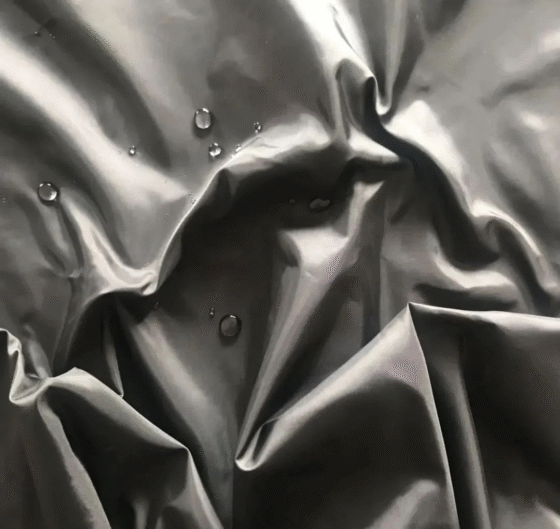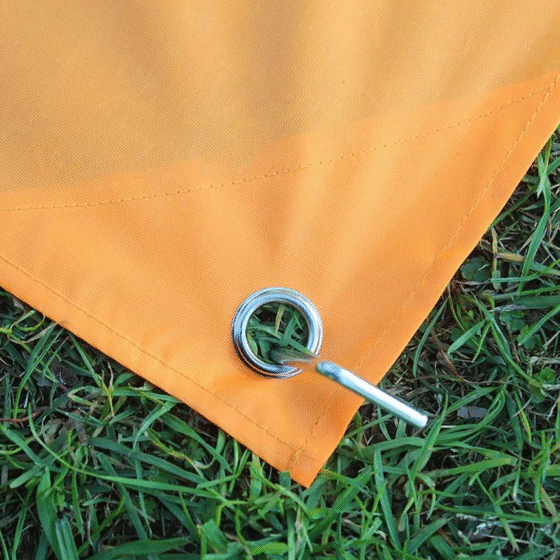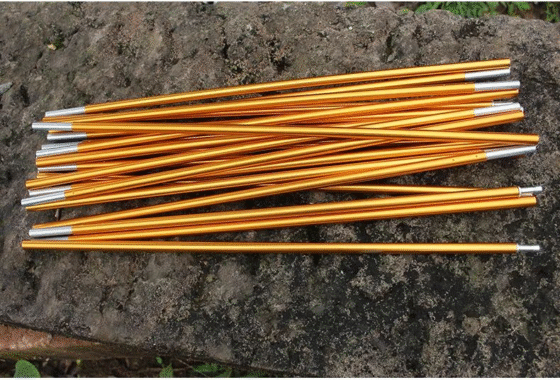
How to Choose the Right Tent for You
A tent is your safety fortress when camping outdoors. Modern outdoor enthusiasts have high expectations for tent materials—not just basic safety, but also ease of use and stylish design. So, what kind of tent offers a perfect combination of lightweight construction, waterproofing, sun protection, insect resistance, quick setup, durability, and breathability?
Generally, tent selection is based on three key factors: number of users, seasonal suitability, und structural design.
Tent Classification by Capacity
Tent space is usually designed according to human body proportions. For example, the average shoulder width of an Asian adult is about 50 cm and height around 175 Zentimeter. Most tents are designed to be 2–3 times the shoulder width and 20–50 cm taller than the user’s height. Tent size should also consider the number of campers and the camping environment.
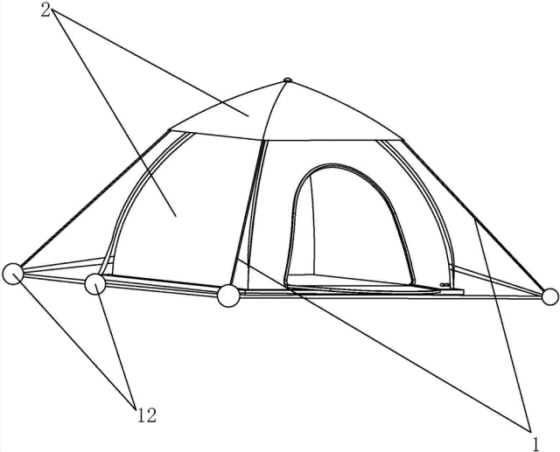
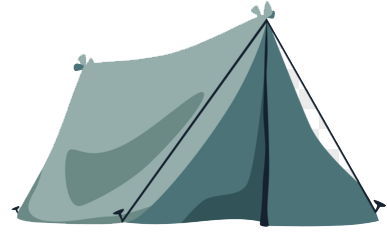
Single-Person Tent
Most solo tents are cone-shaped, with typical dimensions of 200×130×105 cm. When choosing a solo tent, consider your seated height and the thickness of your sleeping pad. Add 5–10 cm more to enhance comfort.
-
Recommended use: 1 person
-
Reference size: 200×130×105 cm
-
Tent types: Pyramid tent, Alpine tent
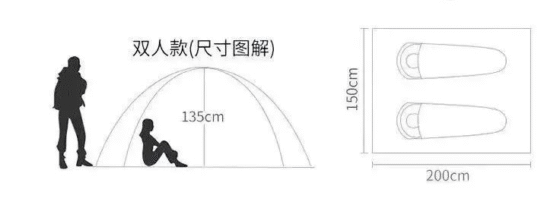

Two-Person Tent
The size can be referenced to a 1.5-meter-wide bed. Ideal height is about 135–150 cm. Choose tents with ample space to avoid feeling cramped during camping.
-
Recommended use: 2 people
-
Reference size: 200×150×135 cm
-
Tent types: Family tent, Park tent, Living room tent
Multi-Person Tent
For families or groups, a spacious multi-person tent is recommended. A 4-person tent is most comfortable for 2–3 people; a 6-person tent fits 4 comfortably. Also consider how you’ll transport the tent—its packed size and weight matter.
-
Recommended use: 3+ people
-
Reference size: 210×210×135 cm
-
Tent types: Tunnel tent, Dome tent, Ridge tent, Yurt
Tent Classification by Season
Tents are generally categorized as 3-season or 4-season tents.
3-Season Tents
Designed for spring, summer, and autumn, these are the most widely sold tents. They’re ideal for most camping conditions and continue to evolve in design and features.
4-Season Tents
As the name implies, these are suitable for year-round use. Designed for avid campers, they often feature double-layer doors: one mesh layer for ventilation in warmer months and one fabric layer for insulation in winter. This dual-layer design is a signature feature of 4-season tents.
Tent Classification by Structure
A tent’s structure is composed of the canopy fabric, tent poles, groundsheet, guy lines, and stakes. Common tent types include yurt tents, pyramid tents, park tents, mountaineering tents, and tunnel tents. The choice depends on weather conditions and usage scenarios. For casual use in parks or light forested areas, a 3-season tent is sufficient.
Tent fabrics can be divided into outer layer, inner layer, und floor materials.
Outer Tent Fabric
Today’s common outer tent materials include:
-
PU-Coated Polyester
Affordable, durable, and water-resistant, ideal for budget tents. Made to perform well in cold and damp conditions.
-
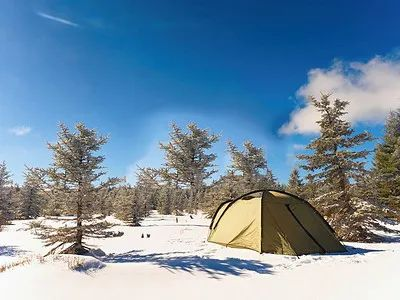
-
Silicone-Coated Nylon
Offers 10x the abrasion and tear resistance of cotton. Highly water-repellent, elastic, UV-resistant, and temperature-stable. Double-sided silicone coating is lighter and stronger than single-sided, typically requiring hand-sealing with liquid sealant for optimal waterproofing. -
Dyneema (Cuben Fiber)
One of the lightest, strongest, and most durable waterproof materials. It doesn’t absorb water and can be quickly repaired with tape.
When selecting a tent, one critical factor is its ability to withstand environmental elements—especially wind and water resistance.
Inner Tent Fabric
Usually made of breathable cotton or nylon taffeta. Since cotton absorbs moisture and dries slowly, nylon is preferred due to its quick-drying and mold-resistant qualities.
Tent Floor Material
The tent floor prevents rainwater from seeping inside and keeps the interior clean and dry. Common materials include:
-
PE (Polyethylene) und PVC (Polyvinyl Chloride): Cost-effective but less durable in cold conditions. Double-coated PE is waterproof and moisture-resistant but prone to wear and leakage. PVC becomes brittle in cold weather and may crack.
-
PU-Coated Oxford Cloth: Offers superior strength, cold resistance, and waterproofing. Overcomes PVC’s shortcomings. Multiple PU coatings can provide waterproof ratings of over 2000 mm.
Tent Poles
Tent poles are the tent’s backbone. The higher the quality, the better the performance. Most modern tents use:
-
Aluminum Alloy Poles
Flexible, wind-resistant, and durable. Aber, low-quality aluminum poles can bend or break easily—choose carefully.
Guy Lines & Tent Stakes
Both guy lines and stakes are essential for tent stability.
-
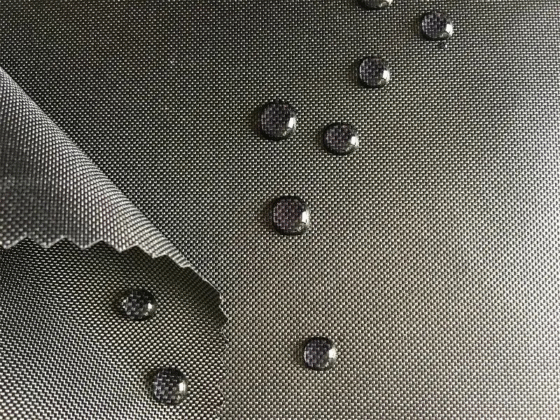
-
Guy Lines
Should be reflective for nighttime visibility and solid-core for strength. Dual-layer cores are common. They help secure the tent during strong winds. -
Tent Stakes
Materials range from aluminum, iron, plastic to high-end titanium. Tent quality can often be gauged by the number of stakes included—premium tents include 10 or more.Common stake shapes include “7”, “9”, round, flat, or L-shaped. Thickness ranges from 3.5mm to 5.5mm—the thicker, the better. Premium tents may include triangular or square stakes for added stability.
Tent Care & Maintenance
Avoid washing your tent in a washing machine. Agitation can strip waterproof tape, and detergents can damage waterproof coatings. Instead, use specialized tent cleaning solutions and gently wipe away dirt.
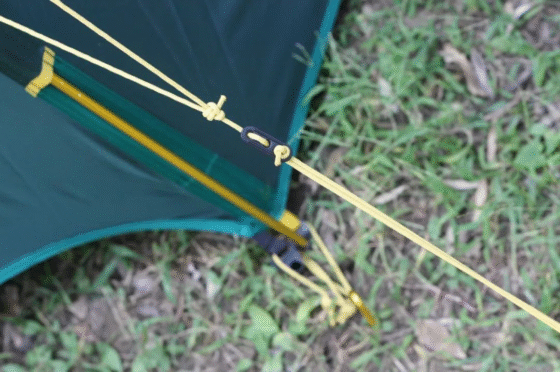
After cleaning, always dry the tent in a shaded, ventilated area. Moist tents can develop mold, which is both unsightly and damaging to waterproof coatings—and it’s nearly impossible to remove once it spreads, potentially ruining the entire tent.
